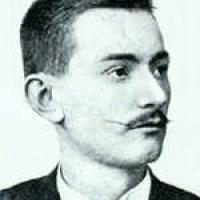
Rezső Charousek video biography
Part One
In the last round of the great 1896 Nürnberg tournament, World Champion Emanuel Lasker was beaten by an almost totally unknown player: 23 year old Hungarian Rezső Charousek. This was the stunning start to one of the shortest, and most brilliant, careers in all chess history. Charousek proceeded to beat every single strong master of his era and to finish first or second in every tournament he played after Nürnberg. Mikhail Chigorin gave him the appropriate nickname "The New Morphy." Like a comet, Charousek flared across the chess firmament, shone with an incandescent brilliance, and was gone.
Part Two:
Though unknown outside of Hungary, Charousek secures a spot at Nürnberg 1896 due to the efforts of friend and benefactor Géza Maróczy. On the strength of his shocking victory over Lasker in the last round, Charousek is then invited to Budapest 1896, to this day the greatest chess tournament in Hungarian history. The event was organized as part of the Budapest Millennial Exhibition and featured the strongest players from every nation: Chigorin, Maróczy, Pillsbury, Janowski, Schlecter, Winawer, and Tarrasch. Only Lasker and Steinitz were missing, in training for their world championship rematch.
Part Three
After Charousek's performance at Budapest 1896, Hungary celebrates him as their new hero, and he is invited to the courts of Kings to give lectures and perform simultaneous exhibitions. Charousek then competes at a strong 19 player international tournament in Berlin 1897, held to honor the 70th anniversary
of the Berlin Chess Union.
Part Four
Charousek competes in a four man tournament with Maróczy, Havasi, and Exner to decide the Hungarian championship. He is then stricken with a catastrophic illness, but recovers well enough to enter the 11th German Chess Congress at Koln 1897. He is also challenged to a match by Dawid Janowski, and invited to Vienna 1898, which will prove to be the strongest chess tournament in history up to that point.
This documentary video was coproduced with my good friends Tim Litten and Annie Kappel
